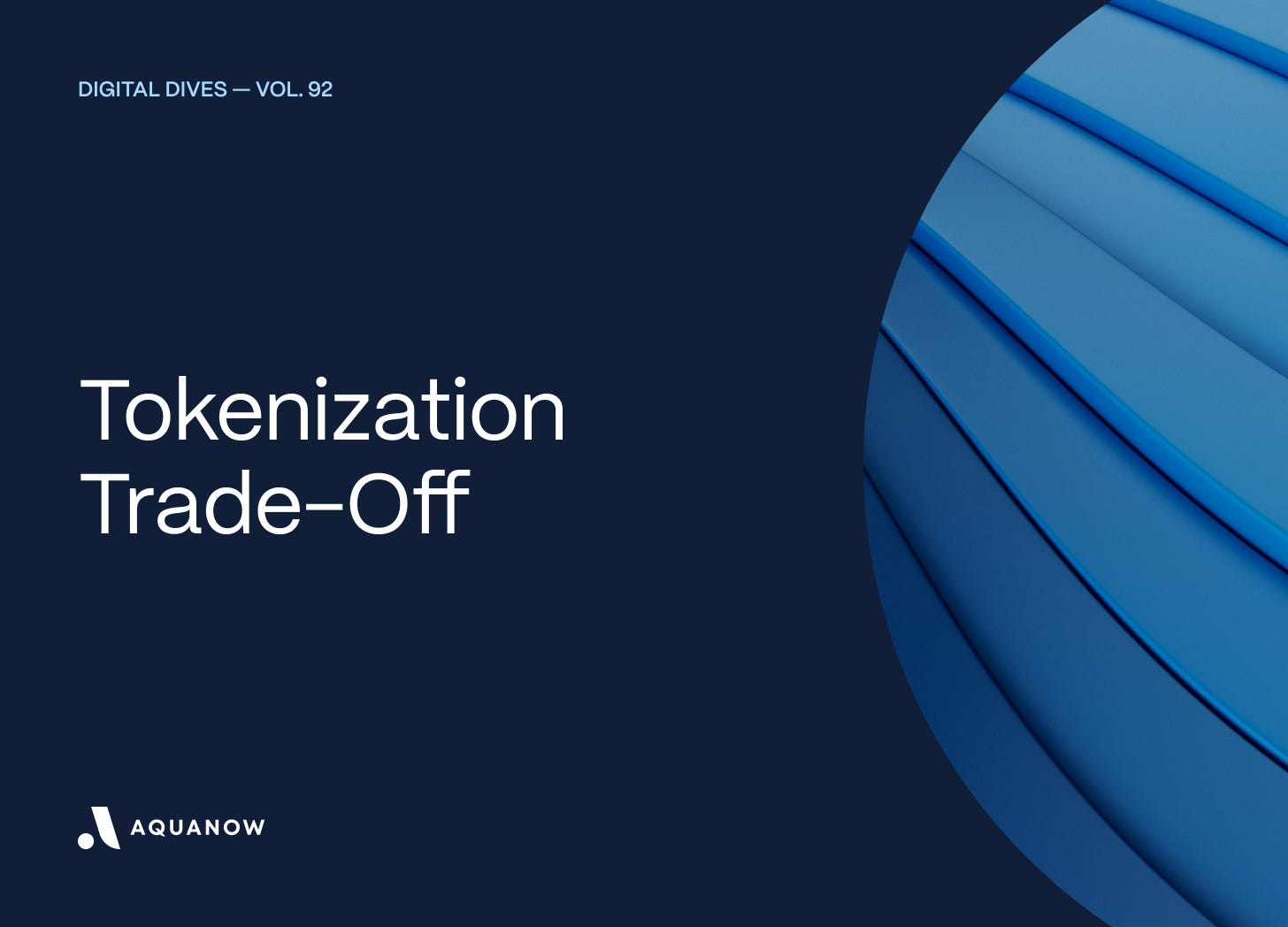The concept of tokenizing traditional assets—from stocks and bonds to private equity and real estate—has become one of the most discussed potential use cases for blockchain technology. Proponents argue that tokenization will "democratize finance", expanding access to the world's best assets, while unlocking new efficiencies in global markets. Undoubtedly, these goals are admirable, but the reality is more nuanced than many enthusiasts suggest.
In this edition of Aquanow's Digital Dives, we'll examine the promise of tokenization, separate hype from reality, and consider why some regulatory guardrails might actually benefit all market participants—including those in the crypto space.
The Promise
At its core, representing traditional assets on-chain offers several compelling benefits:
- 24/7 Trading: Unlike traditional markets, tokenized assets could trade around-the-clock.
- Fractional Ownership: High-value assets become accessible through smaller units.
- Faster Settlement: Blockchain enables near-instant settlement vs. T+1 (or longer) timeframes.
- Global Access: Reaches billions underserved by traditional finance.
- Programmable Features: Smart contracts automate corporate actions, and more.
The potential impact is particularly significant when considering that approximately 1.4 billion adults globally remain unbanked. In many emerging markets, accessing U.S., European or Asian securities is either impossible or prohibitively expensive. Tokenization could create pathways for these individuals to participate in global markets, potentially helping to address the growing wealth inequality gap that plagues many economies. This represents a genuine advancement in financial inclusion that shouldn't be understated.

The Regulatory Reality Check
Despite these promising features, the enthusiasm for tokenizing everything often overlooks crucial realities about why securities regulations exist in the first place.
Securities laws weren't created to burden issuers or restrict access. They evolved to protect investors from fraud, ensure fair and orderly markets, and maintain financial stability. The standardized disclosures that many crypto advocates view as unnecessary red tape actually serve as critical tools that enable investors to make informed decisions and hold management teams accountable.
Consider the SEC's recent statement on tokenized securities, which noted: "As powerful as blockchain technology is, it does not have magical abilities to transform the nature of the underlying asset. Tokenized securities are still securities."
This comment encapsulates an important truth: changing the wrapper doesn't change what's inside. A security with insufficient disclosure remains risky regardless of whether it's represented by a paper certificate or a blockchain token. Most consumers don't have the time or interest to research their investments and as such, disclosures and the fiduciary duties of advisors are important. I'm not saying the current system couldn't benefit from an upgrade, but I don't think allowing anyone with a Metamask wallet access to a buffet of tokenized securities is a prudent next step.
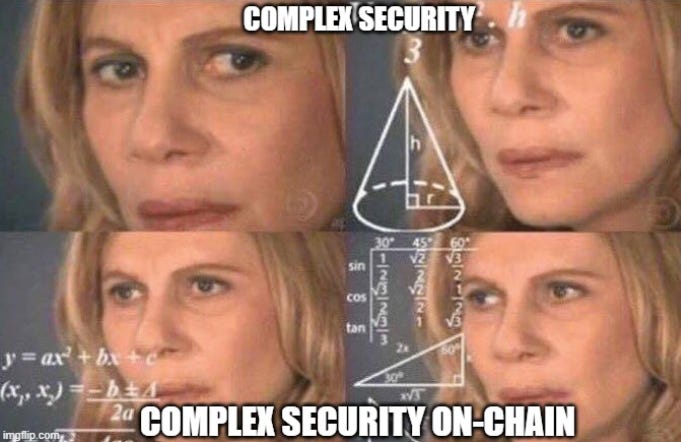
The 2008 financial crisis demonstrated how even sophisticated institutional investors can misunderstand complex financial products. Without appropriate safeguards, tokenization could potentially amplify these risks by making complicated investments more accessible without necessarily making them more transparent.
The Private Market Dilemma
Private markets are inherently risky, with limited disclosure and significant information asymmetries between insiders and investors. What’s often overlooked is the power law distribution that defines venture returns: the majority of investments fail, while just 4 to 6 percent drive most of the profits. Even seasoned venture capitalists with networks, diligence teams, and privileged access expect many of their bets to miss. Retail investors, by contrast, often lack the diversification, capital, or expertise to navigate this landscape safely.
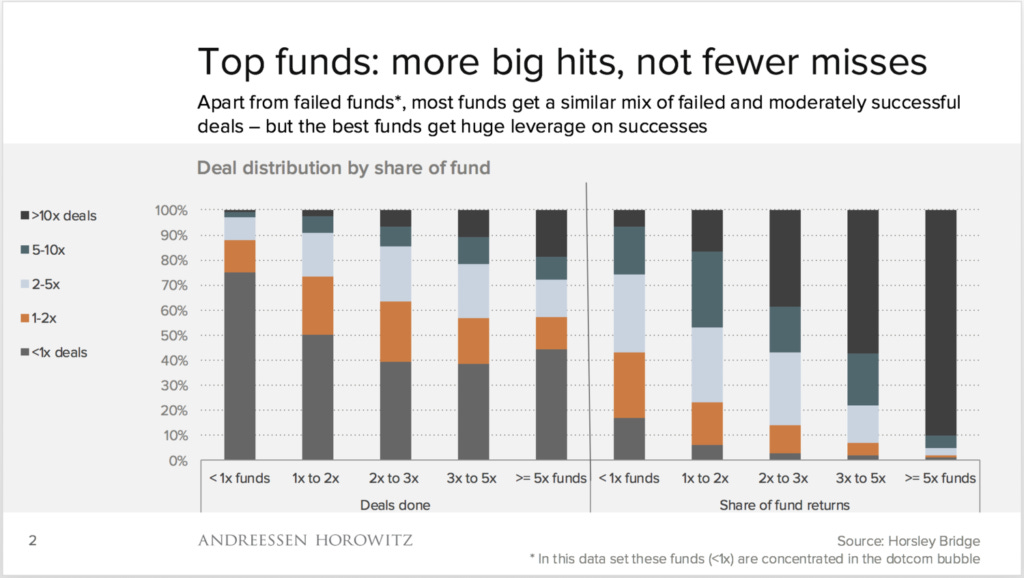
Still, the trend of companies staying private for longer has real consequences. Stripe, valued at 90 billion dollars, has been private for over 14 years. Databricks, at 43 billion dollars, shows no urgency to go public. This extended private lifecycle shuts retail investors out of the early growth phase, the phase where most value is created. Contrast that with Amazon, which went public in 1997 at a 440 million dollar valuation, giving public markets a chance to participate in its rise to a trillion-dollar business.
If private company shares suddenly became freely tradable, regulators would likely require the same disclosures expected of public companies, something many issuers seek to avoid. This could help explain why OpenAI itself has resisted proposals to tokenize its equity.
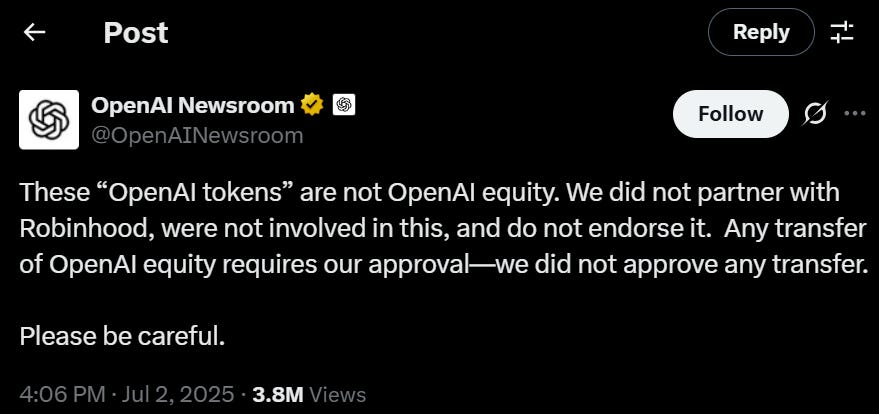
The current framework for private investments is not perfect, but it reflects a basic truth: not all investments are suitable for all investors, especially when transparency is limited.
The Liquidity Paradox
Another often overlooked challenge in tokenization is what might be called the "liquidity paradox." Simply tokenizing an asset doesn't automatically create liquidity for its trading. True liquidity requires a robust ecosystem of buyers and sellers, market makers, and price discovery mechanisms. Automated maker making protocols are helpful here, but aren’t well-suited for institutional scale.
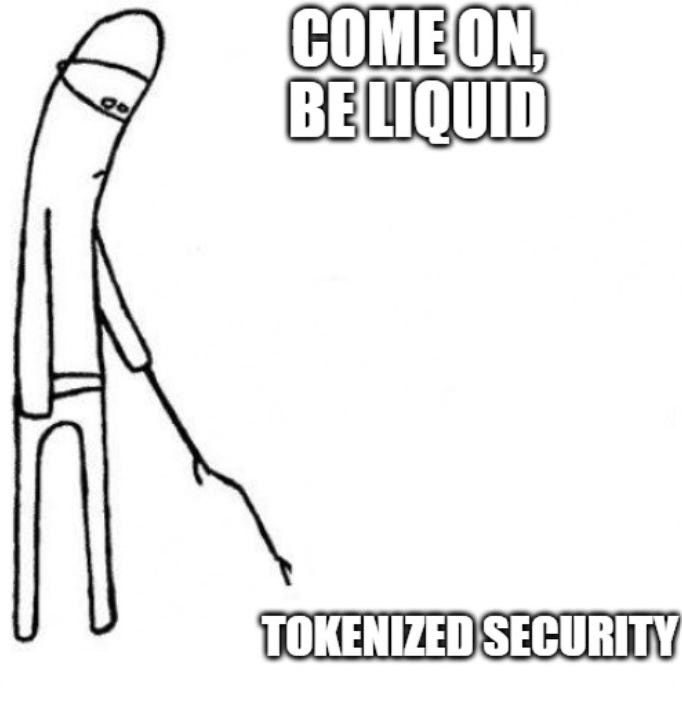
Many tokenization projects have discovered this the hard way, creating technically impressive platforms that ultimately suffer from thin trading volumes and wide bid-ask spreads. Without sufficient market depth, the promised benefits of 24/7 trading and fractional ownership become largely theoretical.
For tokenized securities to achieve meaningful liquidity, they need institutional participation, regulatory clarity, and integration with existing market infrastructure. This doesn't happen overnight and requires thoughtful market design rather than merely technical implementation.
A Middle Path Forward
We've seen how the tech industry’s "move fast and break things" approach is quickly clamped down on when financial services are in the mix. Rather than viewing regulation as the enemy of innovation, the crypto industry might benefit from working with policy makers to help draft thoughtful regulatory frameworks that protect investors while enabling responsible innovation. A related example is how the private equity lobby has pushed for holdings of illiquid investments in U.S. retirement accounts, something already offered here in Canada.
Several promising developments suggest a middle path is emerging:
- Compliant Tokenization Platforms: Projects like Superstate's Opening Bell are developing SEC-registered equity tokenization platforms that maintain compliance while leveraging blockchain benefits.
- Regulatory Clarity: The SEC's recent guidance on tokenized securities provides a clearer framework for compliant innovation.
- Global Experimentation: Jurisdictions like Singapore, Switzerland, and the EU are creating regulatory sandboxes to test tokenization models while maintaining investor protections.
- Institutional Adoption: Traditional financial institutions are increasingly exploring tokenization for efficiency gains while maintaining compliance with existing regulations, creating bridges between traditional and digital finance.
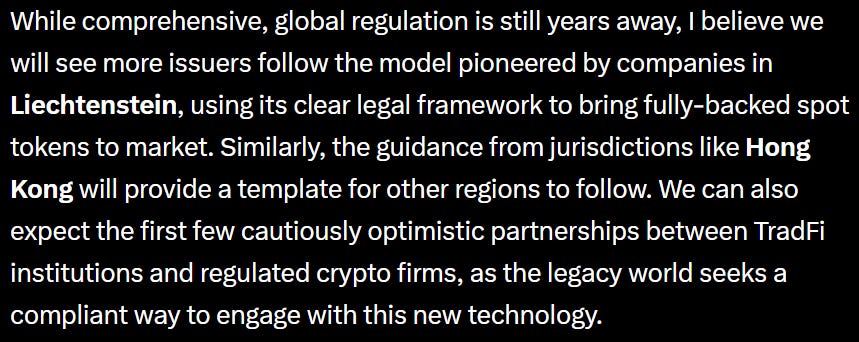
Where Vision Meets Reality
Expanding access to the world's best investment opportunities is a worthy goal that tokenization can help achieve. This is especially cool when you consider how DeFi unlocks new functionality from on-chain assets. It'd be pretty awesome to pledge your Amazon stock as collateral on Aave, borrow USDC, and then engage in yield farming, or make an important consumer purchase between pay cheques. However, this expansion should happen within frameworks that maintain market integrity and investor protection.
The most promising path forward isn't one that seeks to evade regulation entirely, but rather one that works with regulators to modernize frameworks for the digital age. Standardized disclosures, investor protections, and market integrity rules aren't obstacles to innovation—they're the foundation upon which sustainable financial markets are built. Today, with friendly policymakers at the helm and DeFi earning a seat at the table, advocates would be wise to engage regulators proactively. This means understanding the goals and constraints of elected and appointed officials, and working constructively within them.
As institutional investors increasingly explore blockchain-based assets, they're looking for the same level of transparency, compliance, and risk management that exists in traditional markets. The projects that will ultimately succeed in bridging these worlds will be those that embrace both technological innovation and regulatory compliance.
The future of finance isn't about choosing between innovation and regulation, but finding the optimal balance between them. That's where the true potential of tokenization lies.
At Aquanow, we help financial institutions around the world explore and enable digital assets on their platforms. Please reach out if you’d like to learn more.

